

Project Archetect &Researcher: Dr ArielRositaKing

DataAnalysis: MichaelUfia MosesEkwere

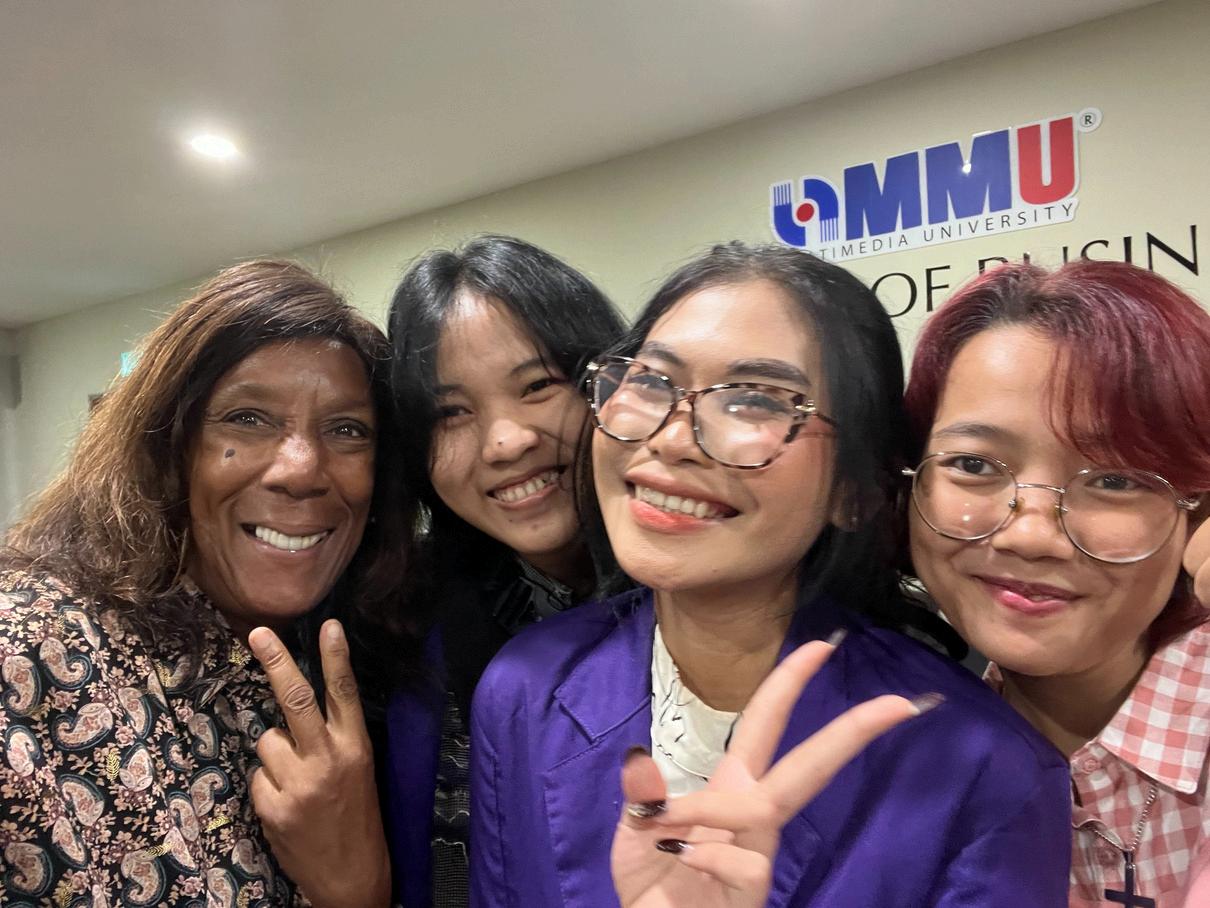

ArielFoundationInternational
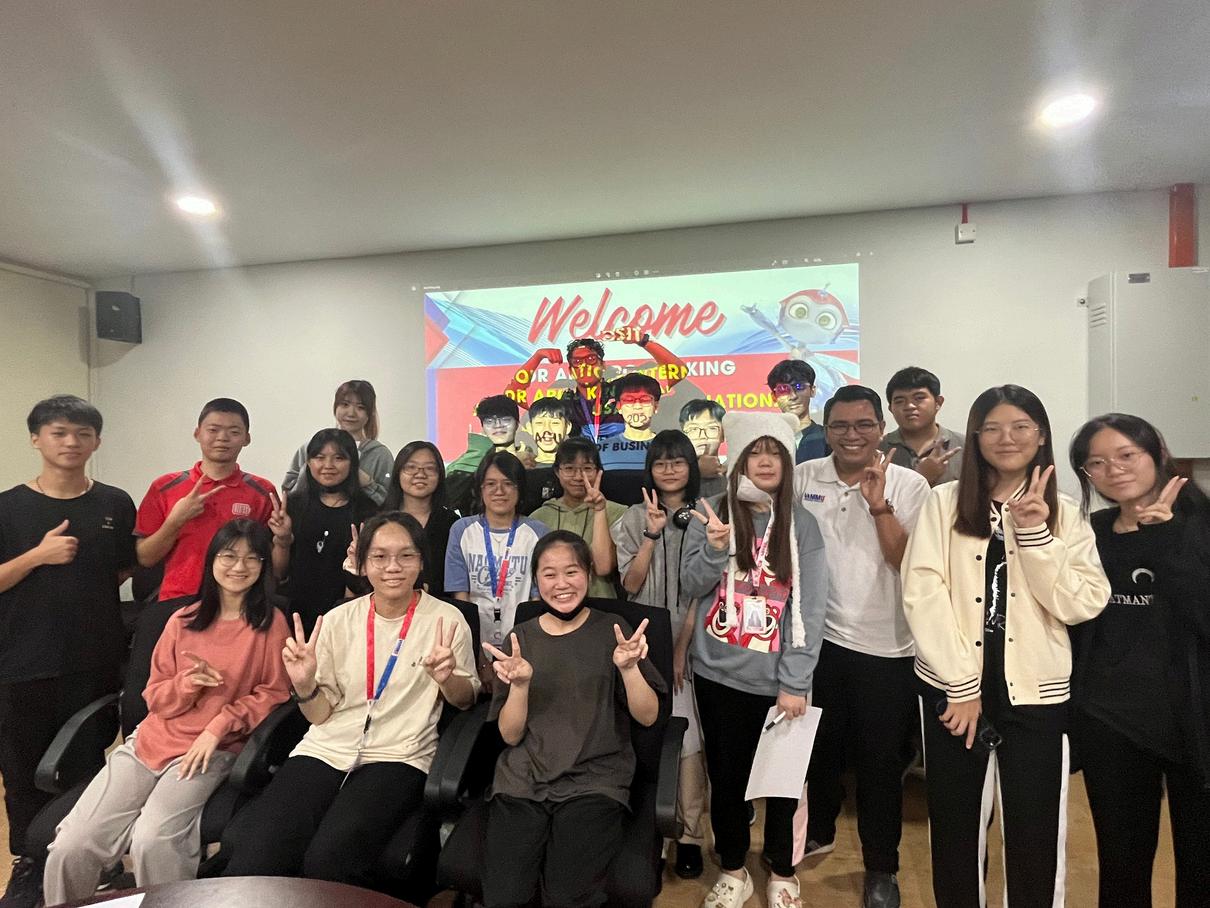




Project Archetect &Researcher: Dr ArielRositaKing

DataAnalysis: MichaelUfia MosesEkwere



ArielFoundationInternational


ProjectArchetect&Researcher: Dr.ArielRositaKing
DataAnalysis: MosesEkwere MichaelUfia
PageLayoutArtist: MosesEkwere
If I am not for myself, who will be for me?
If I am only for myself, what am I?
If not now, then when? Hillel
If not me, then who?"
Dr. Ariel Rosita King











In response to growing global concerns about student mental health, academic withdrawal, and the emotional challenges faced by young people in higher education, Ariel Foundation International, in partnership with Malaysia Multimedia University (MMU), conducted a comprehensive study to investigate the psychological and social dimensions of student well-being This initiative, implemented across MMU’s Cyberjaya and Melaka campuses, set out to identify the root causes of emotional distress, loss of confidence, and disengagement among students and to propose actionable strategies for transformation within the education and development sectors.
The study involved 149 participants, including 132 students and 17 professors, who were engaged through a mixed-method approach involving quantitative surveys and qualitative group discussions. Participants were asked to reflect on their emotional well-being, perceptions of their value, experiences within their social and academic communities, and their outlook on the future The results reveal a nuanced and at times troubling picture: although students express strong relationships with family and friends, many report significant anxiety and emotional strain when thinking about their futures.
At the core of the findings is a notable disconnect between students’ present emotional stability and their lack of confidence in what lies ahead. While the mean happiness scores for family (1 86), friends (1 92), and self-perception (2.14) fall within the “relatively happy” range on a 0–10 scale, scores for community (2.24) and future (2.65) are notably higher, signifying increased
psychological pain, stress, and uncertainty. These results suggest that external socio-economic pressures, coupled with internal emotional struggles, are weighing heavily on young people and potentially undermining their academic persistence and career ambitions.
The study further disaggregated findings by age, gender, and areas of interest, uncovering that the majority of respondents were 18–21 years old, with females showing greater emotional variability and higher representation in the dataset. Students identified a diverse set of passions, ranging from music and art to entrepreneurship, sports, and technology, but also acknowledged major challenges such as financial pressure, peer influence, fear of failure, cyberbullying, and societal expectations.
In structured group discussions, students were encouraged to explore their strengths, opportunities, challenges, and values. The results painted a complex picture of a generation that is resilient, adaptable, and ambitious, yet deeply affected by structural limitations and emotional isolation. Among the most frequently cited values were integrity, honesty, self-respect, family, and spiritual growth, while top aspirations included access to scholarships, skillbuilding opportunities, mentorship, and job placement. These findings highlight the importance of holistic, student-centered interventions that go beyond traditional academic support.
The implications of this research are substantial. It demonstrates that even when students exhibit strong self-esteem and interpersonal relationships, a lack of purpose, uncertainty about employment, and minimal institutional support can result in internalized distress and eventual academic withdrawal. These psychological pain points, often unspoken and invisible, require immediate and systemic attention from universities, ministries of education, and youth advocacy groups alike.
The project is aligned with the following Sustainable Development Goals (SDGs):
SDG 3: Good Health and Well-Being, through its focus on mental health, emotional wellness, and resilience.
SDG 4: Quality Education, by addressing systemic barriers to learning and academic persistence
SDG 10: Reduced Inequalities, in spotlighting gender and economic disparities in emotional outcomes.
SDG 17: Partnerships for the Goals, as a model of cross-sector collaboration between civil society and academia.
Based on the findings, this publication recommends an institutional shift toward emotionally intelligent education systems It calls for universities to integrate mental health services, life skills education, community-building programs, resilience training, and peer mentorship into their regular programming. It also underscores the need for data-informed wellness reviews that help educators and administrators track emotional trends and intervene early.
In conclusion, this study affirms that the academic journey cannot be separated from the emotional journey of students The research illustrates that while young people are rich in potential, they must be nurtured in environments that validate their emotions, invest in their growth, and walk with them as they build their futures The collaboration between Ariel Foundation International and MMU represents a replicable model of how academic institutions and youth-led organizations can join forces to create meaningful, transformative impact.
This report stands as both a testament and a tool: a testament to the lived experiences of students, and a tool for advocacy, policy change, and the development of student-centered learning ecosystems that prioritize empathy, dignity, and psychological well-being alongside academic success

Ariel Foundation International is in Special Consultative status with the Economic and Social Council (ECOSOC) of the United Nations

In the evolving landscape of higher education, students face increasingly complex challenges that extend far beyond academic performance Amid the pursuit of degrees and career preparation, a growing number of young people quietly battle psychological and social pressures that impact their well-being, academic persistence, and confidence in the future. These challenges are particularly pronounced in developing and transitional economies, where the intersection of personal, institutional, and societal stressors can significantlyhinderstudentsuccess.
Leila Benali UNEA-6 President
This publication presents the findings of a collaborative research initiative between Ariel Foundation International and Malaysia’s MultimediaUniversity(MMU),conductedacrossitsCyberjayaand Page 9
Melaka campuses The study was designed not only to investigate the academic and emotional landscapes of university students but to shed light on the underlying pain points, emotional, psychological, and social, that affect student retention, resilience, and overall mental health
Ariel Foundation International, a globally recognized organization with United Nations ECOSOC Special Consultative Status, is committed to empowering children and youth as key agents of change With over 150,000 young individuals impacted globally through programs spanning education, advocacy, and leadership development, AFI continues to be a leader in amplifying youth voices in both academic and international decision-making arenas This project represents a vital extension of that mission, bridging research, public health, and youth empowerment in a structured academic setting.
Growing global concerns over student mental health and the psychosocial risks of academic disengagement inspired the research. High dropout rates, low self-esteem, future uncertainty, and feelings of social isolation have emerged as critical issues within higher education institutions Despite increasing awareness, there remains a lack of comprehensive, data-driven approaches tailored to understanding how these issues manifest at the university level, especially in Southeast Asia.
Through this project, Ariel Foundation International and MMU sought to answer several urgent questions:
Why do students who are academically capable still consider abandoning their education?
What role does self-confidence or the lack thereof play in students' decision-making?
How do social, emotional, and community-based factors intersect with academic persistence?

Leila
Benali
UNEA-6 President
What tangible strategies can institutions adopt to support students before they reach the point of withdrawal? Page 10
To answer these questions, the research team employed a mixed-method approach, combining structured questionnaires with qualitative group discussions to gain a 360-degree view of the student experience. A total of 149 individuals participated, including 132 students and 17 professors Their responses were categorized and analyzed across several psychological domains: self-perception, relationships with friends and family, feelings about community belonging, and outlook on the future.
The findings are both illuminating and sobering. While many students expressed strong support from peers and family, the data revealed a marked decline in optimism when asked about their futures. Students felt a sense of paralysis and fear, despite resilience and motivation, due to concerns about employment, the rising cost of living, academic pressures, and a lack of mentorship. Notably, female students, who were the majority of participants, showed both high levels of engagement and a greater emotional burden regarding prospects.
Beyond highlighting these challenges, the project aims to offer a framework for institutional intervention Informed by Sustainable Development Goals (SDGs) 3, 4, 10, and 17, the study proposes recommendations for integrating mental health services, life-skills education, inclusive mentorship programs, and peer-to-peer engagement strategies. It also advocates for data-informed emotional wellness monitoring as a regular institutional practice
Ultimately, this introduction frames a larger vision: an education system that is not merely about academic output, but one that prioritizes human development, compassion, and psychological safety Ariel Foundation International believes that when students are emotionally supported, socially connected, and empowered with tools for resilience, they are more likely to persist, succeed, and contribute meaningfully to society
This research project is not the conclusion but rather a call to action to universities, ministries of education, public health institutions, and youth advocacy groups By listening to the silent pain of students, we can create responsive systems that ensure no young person is left behind on their journey toward growth, contribution, and self-actualization.
Leila Benali UNEA-6 President

Page 11
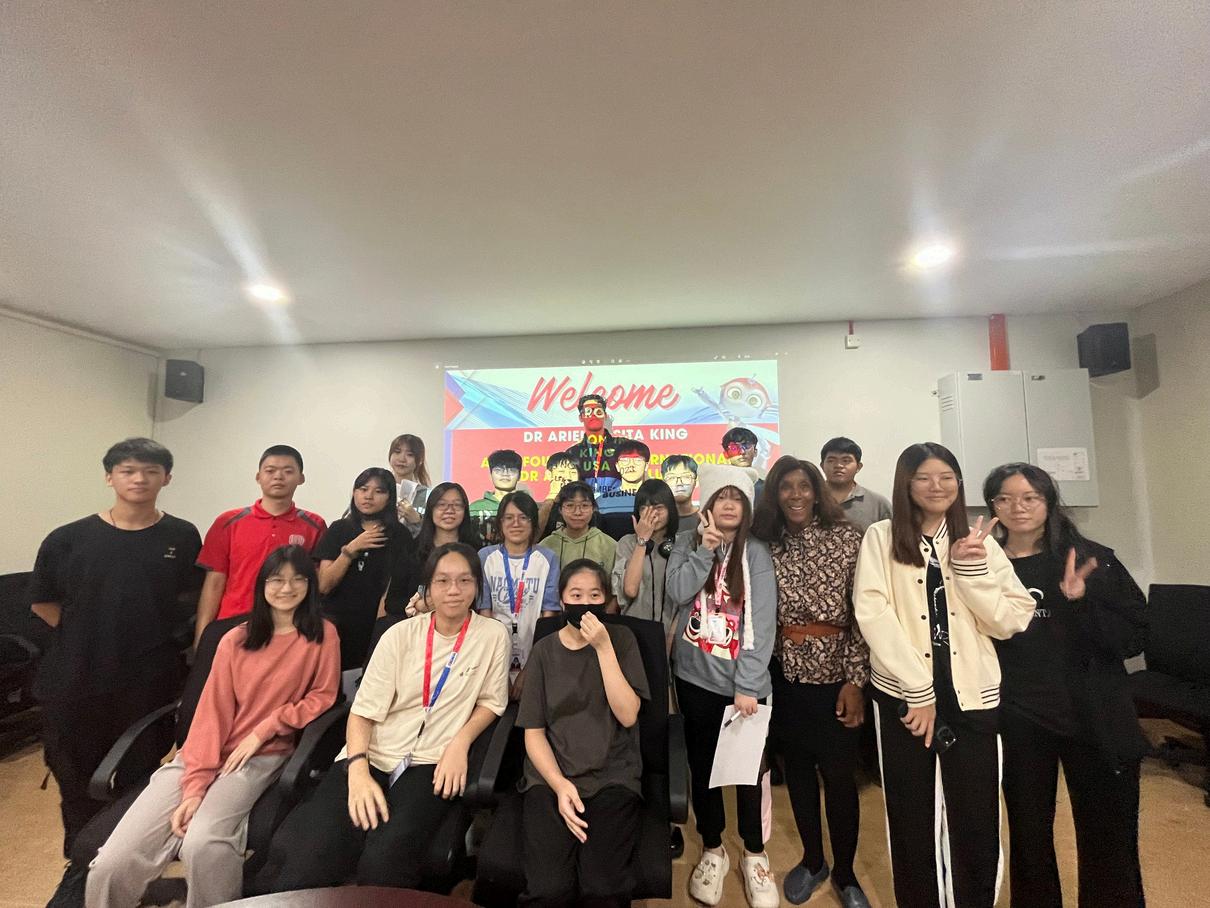

This project, conducted by Ariel Foundation International in partnership
This project, conducted by Ariel Foundation International in partnership with Malaysia’s Multimedia University (MMU), was developed in direct with Malaysia’s Multimedia University (MMU), was developed in direct response to growing concerns surrounding student mental health, response to growing concerns surrounding student mental health, emotional resilience, and academic disengagement in tertiary emotional resilience, and academic disengagement in tertiary institutions Recognizingthatstudentdropoutisnotsolelyanacademic institutions.Recognizingthatstudentdropoutisnotsolelyanacademic issue but a multidimensional one rooted in psychological, social, and issue but a multidimensional one rooted in psychological, social, and systemic challenges, this study set out with comprehensive and systemic challenges, this study set out with comprehensive and ttransformativeobjectives. ransformativeobjectives.
The overarching goal of the project was to understand the emotional
The overarching goal of the project was to understand the emotional experiences that shape students’ academic decisions, with a focus on experiences that shape students’ academic decisions, with a focus on uncovering the underlying causes of pain, anxiety, low self-confidence, uncovering the underlying causes of pain, anxiety, low self-confidence, and perceived failure. These emotional burdens, often overlooked in and perceived failure These emotional burdens, often overlooked in traditional assessments, can silently dictate whether a student traditional assessments, can silently dictate whether a student succeeds,disengages,ordropsoutoftheirstudiesaltogether. succeeds,disengages,ordropsoutoftheirstudiesaltogether.
Thespecificobjectivesareoutlinedbelow: Thespecificobjectivesareoutlinedbelow:
1. To Analyze the Nature and Extent of Social and Psychological Pain
1. To Analyze the Nature and Extent of Social and Psychological Pain
Experienced by University Students: Experienced by University Students: Through structured surveys and Through structured surveys and qualitative group discussions, the study sought to measure how qualitative group discussions, the study sought to measure how students perceive themselves, their relationships, and their students perceive themselves, their relationships, and their environment. Using a custom “pain and happiness scale” ranging from environment Using a custom “pain and happiness scale” ranging from 0 (relatively happy) to 10 (deeply distressed), the study aimed to map 0 (relatively happy) to 10 (deeply distressed), the study aimed to map the emotional temperature of the student body and understand the the emotional temperature of the student body and understand the triggers of psychological pain across multiple dimensions: self, family, triggers of psychological pain across multiple dimensions: self, family, community,andfuture. community,andfuture
This objective focused on revealing silent struggles and emotional This objective focused on revealing silent struggles and emotional burdensthatstandardacademicmetricsfailtocapture. burdensthatstandardacademicmetricsfailtocapture

2. To Identify the Root Causes of Academic Withdrawal and Loss of Persistence: Many students leave university not because they lack capability, but because they lack hope, clarity, and internal strength to continue amid external pressure. This objective explored the nonacademic reasons for academic dropout, such as financial hardship, familyconflict,lowself-esteem,andinstitutionaldisconnect
,
By understanding these root causes, this study offers a new lens for rethinking dropout prevention policies, not through punishment or pressure,butthroughunderstandingandsupport.
3. To Explore the Link Between Unemployment Anxiety and Declining Academic Confidence: One of the recurring fears shared by students was the perceived futility of academic efforts in a world where graduates struggle to find meaningful employment. The study investigated the extent to which economic uncertainty and job market anxiety erode students' confidence and cause emotional fatigue, leadingtodisengagement.
This objective situates education within the larger socio-economic reality of students’ lives, advocating for better career preparation and economicempowermentinterventions.
4.To Develop Strategic and Culturally Responsive Support Mechanisms for Students: Recognizing that students are not a monolith, the project aimed to craft interventions that reflect the diverse needs, values, and aspirations of the student population. Group discussions were designed to allow students to express their values, passions, challenges, and proposedsolutions
Keyareasofinquiryincluded: Whatdostudentsvaluemostinthemselvesandothers? Whatkindsofsupportdotheywishtheyhad? What type of environment helps them thrive emotionally and academically?
Thisobjectiveprioritizesstudentvoicesaskeystakeholdersinthedesign ofstudentwelfareprograms.
5. To Elevate the Value and Visibility of Young People in Policy and Academic Discourse: A core mission of Ariel Foundation International is to amplify youth voices at the highest levels of decision-making This studyunderscoresthatmissionbycenteringstudents’livedexperiences asvaliddatapointsandsourcesofpolicyguidance. Page 13

By publishing this research and aligning it with the United Nations SustainableDevelopmentGoals(SDGs),theobjectiveisto:
InfluenceinstitutionalpoliciesatMMUandsimilarinstitutionsacross SoutheastAsiaandbeyond.
Provideglobaladvocacytoolsforyouth-focusedNGOs,UNpartners, andministriesofeducation.
,
Positionyouthnotassubjectsofacademicconcern,butasdriversof change,wisdom,andinnovation
6.ToPromoteanInternationalStandardforMonitoringEmotionalWellBeing in Higher Education: The final objective of the project is to contribute a scalable model for tracking and addressing emotional distress among university students globally. The mixed-method model used in this study, combining quantitative scoring with qualitative storytelling,canbeadaptedforusebyacademicinstitutions,NGOs,and governmentagencies.
Theseobjectivepositionstheresearchnotjustasalocalproject,butas ablueprintforglobaladoption.
In conclusion, the objectives of this research are both diagnostic and action-oriented They offer not just insight into what students are experiencing, but also direction on what institutions and systems must dotorespondwithcompassion,intelligence,andcourage.
The project serves as a mirror reflecting the invisible experiences of young people, and a map pointing toward a future where no student’s potentialislosttoemotionalpain,societalpressure,orsilentdespair

To achieve the objectives of this study and ensure rigor in both data collection and analysis, a mixed-methods research design was employed. This methodological approach combined the breadth of quantitative measurement with the depth of qualitative inquiry, allowing for a multi-layered understanding of students’ psychological well-being, emotional pain, and academic engagement.
The methodology was structured to be inclusive, student-centered, and contextually grounded, enabling both the aggregation of statistical insights and the elevation of individual experiences The study was implemented across two campuses of Malaysia Multimedia University (MMU): Cyberjaya and Melaka, reaching a representative cross-section of the student population.
The research employed a convergent parallel design, where quantitative and qualitative data were collected concurrently but analyzed separately. The results were then merged during interpretation to provide a comprehensive picture of student well-being.
Quantitative Component: Standardized, structured questionnaires were used to collect demographic and emotional wellness data. These included scaled questions (e.g., 0 = Relatively Happy to 10 = Horrible) assessing participants' feelings about themselves, their family, community, friendships, and future outlook.
Qualitative Component: Focus group discussions were conducted with students in small groups These sessions used open-ended prompts to explore students’ emotional experiences, personal challenges, aspirations, and core values. This helped contextualize the numerical data within students’ lived realities.
A purposive sampling strategy was used to select participants who reflected the diversity of the MMU student body, while also including key faculty perspectives. This ensured adequate representation across gender, age, academic interests, and faculties.
Total Participants: 149 individuals
Students: 132
Professors and Academic Staff: 17
Gender Distribution:
Female: 74+ (over 50%)
Male: 50+
Unspecified: Remaining
Age Range: 18–45 years, with a concentration of participants aged 18–21
Campuses Covered: MMU Cyberjaya and MMU Melaka
Disciplines Represented: Engineering, Business, IT, Arts, Communication, Health Sciences
Participants voluntarily opted into the study and provided informed consent. Anonymity and confidentiality were assured
a.
Participants were given printed or digital forms to assess:
Their emotional state in five categories: Self, Family, Friends, Community, and Future
Their perceived happiness levels using a numeric scale (0–10)
Demographic variables (age, gender, interests, academic background)
The responses were tabulated for statistical analysis, with average (mean) scores calculated for each emotional category. These scores were then compared across gender, age, and campus.
b.
Students were organized into five groups. Discussions focused on:
Emotional challenges (e.g., peer pressure, cost of living, cyberbullying)
Personal values (e.g., integrity, empathy, spirituality)
Hopes and fears for the future
Suggestions for institutional improvement
The discussions were recorded via notes and manually coded thematically to extract patterns and sentiments.
a. Quantitative Analysis
Descriptive statistics (frequencies, percentages, and means) were computed for all survey items.
Mean scores were calculated for each emotional well-being indicator.
Comparative analysis was done across gender and campuses to detect significant trends or disparities.
b. Qualitative Analysis
Data from group discussions were transcribed and thematically analyzed using manual coding.
Common themes were identified in four domains: Strengths, Challenges, Opportunities, and Values
Triangulation was used to validate qualitative insights with quantitative trends.
The convergent design allowed the team to compare quantitative scores (e.g., students scoring 2.65 in future outlook) with narrative data that explained why they felt uncertain or anxious
This dual lens enhanced the reliability and contextual relevance of findings.
The study adhered to international ethical standards in research.
Participation was voluntary, and all students provided informed consent. No personally identifiable data was recorded.
Special attention was paid to cultural sensitivity, gender inclusion, and emotional safety.
Students in emotional distress were discreetly referred to campus counseling units.
6. Limitations of the Study
While the study provides rich insights, it acknowledges the following limitations:
Sample Size: Although diverse, the sample of 149 may not capture the full complexity of MMU’s total student body.
Self-Report Bias: As with all emotional wellness surveys, responses may be influenced by social desirability or fear of judgment
Cross-Sectional Nature: The study reflects student perceptions at one point in time. Longitudinal follow-ups would strengthen understanding of evolving trends.
7. Strengths of the Methodology
Combines empirical rigor with human-centered design
Empowers youth as co-researchers and knowledge sources
Adapts well for replication in other universities and countries
Aligns with SDGs and global education quality frameworks
This robust methodology positions the study as not merely observational but transformative, offering both a diagnostic tool for understanding student pain and a framework for implementing emotional and educational reform at national and international levels.
18
T E A M C O M
The success of this project is a direct result of the collaboration, expertise, and leadership of a dedicated team of professionals and youth advocates, each bringing unique skills to support the mission of understanding and addressing student well-being at Malaysia Multimedia University (MMU).
Lead Researcher and Project Director: Under the leadership of Dr. Ariel Rosita King, Founder & President of Ariel Foundation International and Dr. King Solutions, Dr. King provided overall strategic direction and served as the principal investigator for the project With over 35 years of international experience in public health, child advocacy, and leadership development, Dr. King guided the study design, supervised data interpretation, and ensured the alignment of the research with AFI’s global mission and the UN Sustainable Development Goals (SDGs). She also facilitated institutional partnerships and led dissemination planning for international impact.
Administrative and Logistical Support: The team was also supported by a cohort of volunteers and MMU-based coordinators who assisted in distributing questionnaires, collecting forms, organizing group sessions, and ensuring timely data retrieval. Their commitment made it possible to complete the program smoothly across two active campuses within a short period
Institutional Partnership: MMU (Cyberjaya & Melaka Campuses) as the host institution, provided invaluable access to students and faculty, classroom spaces for discussions, and ethical guidance to ensure participant safety and engagement. The collaboration reflects MMU’s commitment to progressive research and its openness to student-led well-being interventions.
E A M C O
Sir Moses Ekwere and Sir Michael Ufia, both distinguished ChangeMakers of Ariel Foundation International, played vital roles in the post-fieldwork phase of this project. They provided critical remote support in interpreting collected data, conducting qualitative and quantitative analysis, compiling and structuring the publication, and coordinating the visual layout and editorial design Their commitment, professionalism, and attention to detail ensured that the final publication met international standards while reflecting the voices and experiences of students with clarity and impact
This diverse and interdisciplinary team exemplifies Ariel Foundation International’s model of combining professional leadership with grassroots youth engagement. Together, creating a publication that not only highlights the emotional lives of students but also serves as a strategic tool for advancing student well-being and academic resilience on a global scale. The research was grounded in methodological integrity, community engagement, and a passion for youthcentered change.
Dr Ariel Rosita King MPH, MBA, PHD (UK), DTM&H, PHD (FRANCE) Founder and President Ariel Foundation International & Dr. King Solutions
This study engaged a total of 149 participants, comprising 132 students and 17 professors, drawn from both Cyberjaya and Melaka campuses of Malaysia Multimedia University (MMU) The demographic distribution was intentionally designed to be student-centered, while also incorporating faculty perspectives to enhance the study’s depth, reliability, and cross-generational relevance.

As illustrated in the pie chart on this page, the student population constitutes 44% of the total respondents, with professors accounting for the remaining 6%. This balance allows the study to prioritize the emotional experiences, well-being, and academic journeys of young people, while simultaneously contextualizing those findings within the insights and observations of academic staff.
By including both students and faculty, the project benefits from a dual perspective:
Students serve as primary subjects, offering firsthand insight into the emotional, psychological, and academic struggles they face.
Professors contribute an institutional lens, helping interpret patterns of disengagement, academic withdrawal, and confidence loss among students.
This dual-input structure strengthens the validity of the data and helps shape practical, institution-level recommendations.
To derive a meaningful analysis from the participant pool, several key variables were considered. These include:
The majority of participants were aged 18–21, representing the typical undergraduate demographic.
A smaller segment included mature students and faculty members aged 30–50+.
The gender breakdown reflects greater female participation, which allowed for comparative analysis across emotional responses and self-confidence trends.
Gender-specific insights were particularly relevant in analyzing categories such as future anxiety and community connection.
Data was gathered from both MMU Cyberjaya and MMU Melaka, enabling campus-specific comparisons
This multi-campus sampling approach allows for exploration of how contextual, environmental, or academic factors may influence emotional well-being.
Participants were enrolled across diverse faculties, including engineering, business, communications, information technology, and creative arts
The study also captured personal interests such as music, sports, entrepreneurship, spirituality, and digital innovation, highlighting the multidimensional identity of students.
The dominance of student voices emphasizes the urgency of the issues highlighted, particularly around mental health, fear of the future, and selfconfidence
Faculty input, though quantitatively smaller, added qualitative richness and helped validate student feedback with practical classroom observations
The broad age and interest spectrum enhances the representativeness of the sample and allows for cross-sectional interpretation across variables
This participant distribution provides a solid foundation for both the quantitative and qualitative dimensions of the research. It ensures that the lived realities of students remain at the center of the analysis, while also integrating the expertise and institutional perspectives of academic staff. This strategic demographic balance increases the credibility, applicability, and policy relevance of the study's recommendations.
Gender distribution analysis provides valuable insight into the composition of the study population and helps uncover potential gender-based emotional patterns across campuses. By examining the presence of male, female, and unspecified gender identities across MMU Cyberjaya and MMU Melaka, the study captures a more inclusive demographic profile and allows for comparative insight into how gender may intersect with emotional well-being and academic confidence.
At the Cyberjaya Campus (Campus 1), a total of 99 participants were recorded. Among them:
49 identified as female
36 identified as male
14 did not specify their gender
This distribution reflects a female-majority representation, with women making up nearly 50% of the Cyberjaya respondent group. The presence of 14 unspecified entries also highlights the need for more inclusive and sensitive demographic data collection practices in future studies.

At the Melaka Campus (Campus 2), the gender distribution was based on a total of 50 participants, with:
25 identifying as female
10 identifying as male
15 not specifying their gender
Once again, females constitute the largest group, representing 50% of participants The significantly smaller male population (20%) compared to female respondents suggests a potential imbalance in gender engagement or availability during data collection. The high number of unspecified entries (30%) emphasizes the importance of promoting safe, voluntary gender disclosure.

Across both campuses, female participants consistently outnumber males, a trend that may influence the emotional and psychological findings of this study, particularly in areas such as future anxiety, selfconfidence, and community belonging.
The number of unspecified gender entries (14 at Cyberjaya, 15 at Melaka) is significant, highlighting the need to create survey environments that respect privacy while encouraging open demographic sharing.
Future research should consider analyzing emotional well-being scores by gender category, to explore trends such as:
Whether female respondents report higher emotional distress If gender-non-disclosure correlates with specific emotional responses.
Conclusion
This gender distribution analysis reinforces the importance of genderresponsive programming and support systems in university settings. It also provides a basis for deeper gender-disaggregated analysis of student emotional wellness and academic resilience, central themes of this publication.
This section presents a comprehensive gender breakdown of all participants across both MMU Cyberjaya and MMU Melaka campuses, highlighting the overall demographic distribution in the study A bar chart accompanies the data to provide a clear visual comparison between female, male, and non-specified respondents.
Total Gender Count (Across Both Campuses)
Females (F): 49 (Cyberjaya) + 25 (Melaka) = 74 individuals
Males (M): 36 (Cyberjaya) + 10 (Melaka) = 46 individuals
Non-Specified (N): 14 (Cyberjaya) + 15 (Melaka) = 29 individuals
Total Participants: 149 individuals

Gender Distribution Across Both Campuses
Percentage Breakdown (Out of 149 Participants)
Females: 74 / 149 ≈ 49 7%
Males: 46 / 149 ≈ 30 9%
Non-Specified: 29 / 149 ≈ 19.5%
This analysis shows that females constitute the largest group of respondents, making up nearly half of the entire sample. The male population accounts for about one-third, while a significant number of participants chose not to disclose their gender.
High Female Participation: The strong presence of female respondents may indicate a greater interest or willingness to engage in emotional and psychosocial surveys, particularly those addressing well-being, confidence, and community belonging
Underrepresentation of Males: The male participant count is notably lower, suggesting potential disengagement or hesitation among male students in participating in studies of this nature This mirrors global trends in which males often underreport emotional vulnerability or are less engaged in mental health assessments.
Meaningful Number of Non-Specified Entries: With nearly 20% of participants opting not to disclose gender, this reflects the importance of providing non-binary and privacy-respecting survey options. It also calls for inclusive approaches in future program design and data collection strategies.
1.Design Gender-Sensitive Interventions: Given the high level of engagement from female students, universities can start with targeted pilot programs addressing emotional well-being, academic resilience, and leadership development for this group, while ensuring parallel efforts are made to encourage male participation.
2.Encourage Inclusive Participation: The notable presence of non-specified entries highlights a growing trend of students seeking privacy or feeling outside binary gender identification. Future outreach and wellness programs must be inclusive and identity-affirming.
3.Explore Gender-Based Trends in Emotional Data: With females forming the majority of respondents, the study can further analyze emotional wellbeing scores disaggregated by gender to identify whether specific psychological domains (e.g., future anxiety or self-perception) trend differently among male and female students.
Age is a critical demographic variable when examining emotional and psychological well-being in academic environments. Understanding the age range of participants helps contextualize their responses, as experiences, maturity levels, and academic expectations often vary by age. This section presents the age distribution of participants from both MMU Cyberjaya Campus (Campus 1) and MMU Melaka Campus (Campus 2), along with bar chart visualizations of the frequency patterns observed.
The age data collected from entries 1 to 100 in the dataset (representing Cyberjaya campus respondents) reveals a concentration of participants in the late teenage years, primarily between ages 18 and 20

Age 18 is the most represented group among Cyberjaya participants. There is a gradual decline in frequency as the age increases beyond 20, with few participants above the age of 25
The data indicates that the student population is largely composed of undergraduate-level participants, aligning with the typical age bracket for entry-level university students.
This youthful distribution supports the relevance of the study’s focus on confidence-building, academic transition, and future anxiety, as these concerns are often amplified during early university years.
From entries 101 to 149 in the dataset, corresponding to participants at MMU Melaka Campus, a similar pattern emerges. The majority of respondents are between 18 and 22 years old, reinforcing the dominant presence of traditional-age university students in the study

The highest number of participants falls within the 18–21 age range. There is a sharp drop-off in participation from individuals above 23 years, indicating that this sample is focused heavily on full-time, first-degree students.
Similar to Cyberjaya, the absence of mature-age participants may suggest a need for future studies to purposefully include postgraduates or parttime learners to diversify emotional perspectives.
Across both campuses, the age distribution is heavily skewed toward young adults, predominantly those in their first or second year of university
This concentration underscores the importance of targeted interventions for early-year students who are most vulnerable to emotional strain during academic adjustment phases
The lack of mature or older students in the sample limits generalizability to postgraduate cohorts but strengthens the focus on youth empowerment and early intervention, a core mission of Ariel Foundation International
1.Peer Mentorship Programs: Given that most students are under 21, introducing structured peer mentorship opportunities (e.g., senior-to-junior support) could ease academic transition stress
2.Life Skills & Confidence Training: Early university years are marked by identity formation and uncertainty. Institutions should integrate soft-skill workshops focusing on self-awareness, decision-making, and emotional resilience for this age group
3.Age-Specific Messaging in Mental Health Campaigns: Campaigns and outreach materials should reflect the language, experiences, and challenges of teenagers and young adults to maximize impact and relatability
This section presents a consolidated view of age distribution across the full dataset of participants from both MMU Cyberjaya and MMU Melaka campuses. The analysis offers insight into the age profile of the overall participant pool and supports deeper interpretation of emotional well-being trends based on life stage and maturity
The age of participants in this study spans from 18 to 45 years, capturing the perspectives of both traditional undergraduate students and a smaller group of older individuals, including faculty and mature learners.

Age 18 is the most frequently represented age, with 49 participants, accounting for nearly one-third of the total sample.
Early 20s (ages 19–21) also show moderate representation:
Age 19: 11 participants
Age 20: 8 participants
Age 21: 7 participants
Representation significantly declines after age 22, with only isolated counts recorded for:
Ages 23, 25, 26, 28
Faculty-age participants: 36, 38, 42, 43, 44, and 45
These numbers indicate that while the study captures a few older individuals, the overwhelming majority of participants are between the ages of 18 and 21, consistent with undergraduate-level engagement.
Younger Majority: The dataset is skewed toward late teenagers and early 20s, with Age 18 representing the peak of participation This is reflective of newly admitted university students and those in their early stages of academic life.
Mature-Age Representation: The presence of older participants, mostly in their late 30s to mid-40s, represents faculty or postgraduate students, though they constitute a very small fraction of the total dataset.
Sharp Drop-Off After Age 21: There is a steep decline in participation from individuals aged 23 and above, reinforcing the focus of the research on youth and early adulthood, a critical developmental stage for identity formation, career orientation, and psychological transition
Youth-Centered Intervention Design: Programs, tools, and policies stemming from this research should be designed with youth (18–21 years) as the core target group, reflecting the dominant demographic in the study.
Need for Mentorship from Older Students or Staff: Given the minimal representation of mature students, universities may consider leveraging older students or academic staff to mentor younger participants navigating emotional stress and academic pressures.
Expand Future Research to Postgraduates and Part-Time Learners: While this dataset is rich in youth data, subsequent studies could seek more balanced age sampling to capture the full university ecosystem, including graduate students, working professionals, and part-time enrollees
Understanding the personal interests of students provides valuable insight into their motivations, creativity, and emotional inclinations. These interests are not only indicators of personality but also serve as a useful guide for designing youth-centered programs, extracurricular activities, and emotional well-being interventions.
This section explores the distribution of interests across genders, based on self-reported data from participants at MMU Cyberjaya and Melaka campuses.
The findings reveal diverse passions, with music, sports, art, reading, health, and travel ranking as common themes.

Bar Chart – Top Interests Among Participants
C L O U D
D O M I N A N T I N T R E S T & T H E M E S


The dataset below confirms that the majority of participants are 18 years old, which aligns with early university or college entry At this developmental stage, students are actively forming their identity and seekingchannelsforself-expressionandpersonalgrowth.Theirinterests reflect a blend of emotional outlets (e.g., music and art) and goalorientedpreferences(eg,innovationandeducation)
Interests
Music
Sports
Reading
Art
Health & Wellness
Education
Traveling
Innovation/Tech
Cars
Accounting/Finance
✅ Strong interest
⚪ Moderate interest
✅ Strong interest
✅ Common among female respondents
✅ Noted (especially among those interested in education)
✅ Linked to career ambition and passion areas
⚪ Minimal interest
⚪ Some interest
⚪ Rare
⚪ Minimal mentions
✅ Strong interest
✅ High interest
⚪ Low to moderate interest
⚪ Rare among male respondents
⚪ Less prominent
⚪ Minimal reference
✅ Higher interest compared to females
✅ More prevalent in male responses
✅ Notably popular
✅ Often cited among male participants
Music is the most universally shared interest across both genders, suggestingitsroleasanemotionaloutletandculturalconnector.
Sports are more dominant among male participants, aligning with broaderglobalyouthtrends
Art and Reading appear more frequently in female responses, indicating a strong inclination toward reflective, expressive, and creativeactivities.
Traveling unexpectedly showed more interest among males in this dataset, perhaps reflecting aspirations for independence or adventure.
Technical and financial interests (eg, innovation, accounting, cars) were predominantly mentioned by males, while females were more likelytoreferenceeducation,healthcare,andarts-basedfields.
1.CreativeArts&Music-BasedInterventions
2 Institutions should consider integrating music and creative arts into student support or emotional wellness programming, as these resonatewidelyacrossgenderlines.
3 Gender-InformedEngagement
For female students, programs centered on literacy, health, art, andeducationleadershipmaygeneratehigherengagement. Formalestudents,engagementmaybeboostedthroughsports, innovation challenges, travel opportunities, and technical workshops.
4.PersonalizedWellnessPathways
5 The diversity of interests suggests the need for customizable personal development programs. Allowing students to express themselvesthroughtailoredactivitiesalignedwiththeirinterestscan significantly enhance their mental well-being and academic motivation
6.IncorporateInterestsintoMentalHealthTools
7. Futurewell-beingassessmentsshouldexplorehowstudentinterests correlate with happiness and emotional resilience enabling more emotionallyintelligentstudentsupportsystems.
Understanding how students feel about themselves is central to this study’sexaminationofemotionalwell-beingandacademicpersistence
Self-perception plays a crucial role in shaping confidence, motivation, and resilience: factors that significantly influence academic outcomes andpersonaldevelopment
Thissectioncategorizesresponsestothe question: "HowdoIfeelabout myself?" based on a self-reported emotional scale ranging from 0 (relativelyhappy)to10(extremeemotionalpainordistress)
Participants' self-perception scores were grouped into three distinct emotionalcategoriestofacilitateanalysis:
Experiencing mild to moderate emotional discomfort
Severe emotional pain; strong indicators of distress

Bar Chart – Self-Perception Scores by Gender and Category SummaryofFindings
�� RelativelyHappy(0–2)
Totalindividuals:109
Females:57(≈523%ofthisgroup)
Males:32(≈29.4%ofthisgroup)
This category comprises the largest proportion of respondents, indicatingagenerallypositiveself-perceptionamongthemajority
�� NotVeryHappy(4–6)
Totalindividuals:36
Females:16(≈444%)
Males:11(≈30.6%)
This group represents students experiencing emerging self-esteem challenges, possibly due to academic stress, identity concerns, or peerinfluence.
�� Horrible(8–10)
Totalindividuals:3
Females:1
Males:2
Though a small group, these individuals reported severe emotional pain which may signal deeper mental health concerns and a need forimmediatesupport.
The majority of respondents (over 70%) fall into the “Relatively Happy” category, suggesting that many students have a strong or stableself-perception
However, the presence of 36 students in the “Not Very Happy” category points to a concerning subset who may be silently strugglingwithself-esteemandconfidenceissues
While the “Horrible” category is small, its significance should not be overlooked students in this range may be at risk of mental health declineandacademicwithdrawalifnotsupported.
Females appear more frequently across all three categories, especially in the “Relatively Happy” and “Not Very Happy” groups Thiscouldreflect: Greaterwillingnesstoself-assessemotionally. Increased emotional awareness or vulnerability to external pressures
Males were underrepresented in self-reporting high distress levels (possibly due to stigma or social conditioning), though they slightly outnumberedfemalesinthe“Horrible”category.
1.Implement Confidence-Building Workshops: Target students in the mid-range (4–6) with resilience-building programs, self-esteem exercises,andmentoring.
2.Discreet Support for High-Risk Individuals: Quietly engage with individuals in the 8–10 range, referring them to university counseling ormentalhealthservices.
3.Monitor Emotional Trends by Gender: Continue collecting genderdisaggregated data to tailor emotional wellness programs with gender-sensitivedesigns
Friendships are foundational to emotional development, especially in academic environments where peer support can significantly influence resilience, confidence, and belonging. This section analyzes participants’ emotional perceptions regarding their friendships, using a self-assessment scale ranging from 0 (relatively happy) to 10 (deep emotionaldistress).
Participants' scores were grouped into three emotional well-being categories,asappliedthroughoutthestudy.

–
�� RelativelyHappy(0–2)
Total:117participants
Females:60
Males:36
This category represents the majority of respondents, indicating that most students perceive their friendships as supportive, encouraging,andemotionallyfulfilling.
�� NotVeryHappy(4–6)
Total:21participants
Females:9
Males:12
Thisgroupreflectsstudentswhomayfeelemotionallydisconnected orunsatisfiedwiththeircurrentsocialcircle Theymaystrugglewith lonelinessorunreciprocatedfriendships.
�� Horrible(8–10)
Total:6participants
Females:2
Males:3
This small but significant group expressed deep dissatisfaction or distress in their friendships. These individuals may be experiencing rejection,exclusion,orsocialisolation.
The majority of students feel positively about their friendships, suggestingastrongpeersupportcultureintheMMUcommunity.
More males than females are represented in the “Not Very Happy” and “Horrible” categories, hinting at possible social struggles or loweremotionalexpressionamongmalestudents.
Even though the number of individuals in the “Horrible” category is small, their emotional experience must be acknowledged, as prolonged social distress can contribute to academic withdrawal or mentalhealthdecline.
Positive friendships contribute significantly to academic motivation, mentalhealth,andresilienceduringstress.
Studentswhoreportdissatisfactioninfriendshipsmayalsobeatrisk ofsocialexclusion,affectingself-esteemandsenseofcommunity.
Peer relationship dynamics are particularly important for younger students (18–21) who are transitioning into independent social environmentsforthefirsttime.
1 PeerSupportandMentoringInitiatives
2.Encourageupper-levelstudentstoserveasmentorstonewstudents, helpingthembuildsocialconfidenceandsupportsystems.
3 SocialResilienceandConflictNavigationWorkshops
4.Equip students with skills to manage peer conflict, recognize unhealthyrelationships,andstrengthenemotionalboundaries.
5.AnonymousSocialClimateFeedbackTools
6 Allow students to regularly assess their social experiences and offer feedbackoninclusiveness,safety,andbelongingwithinthecampus.
Family relationships are among the most influential emotional anchors inayoungperson’slife.Theyshapepersonalidentity,self-worth,andthe capacity to navigate academic and social challenges. This section exploreshowparticipantsfeelabouttheirfamilyrelationships,usingthe samestandardizedemotionalratingscalefrom0(relativelyhappy)to10 (deepemotionaldistress).
Participants’ responses were grouped into three categories for effective interpretation.
Strong family bonds, emotional stability, sense of belonging
Some conflict, emotional distance, or perceived lack of support
Deep family dissatisfaction, possible trauma or alienation

Bar Chart – Emotional Perception of Family by Gender and Category
�� RelativelyHappy(0–2)
Total:122participants
Females:60
Males:36
Theoverwhelmingmajorityofrespondentsreportedpositivefeelings toward their family, suggesting emotional support and stability in thehomeenvironment.Thisgroupispredominantlyfemale.
�� NotVeryHappy(4–6)
Total:20participants
Females:13
Males:5
This group may represent individuals experiencing ongoing family stress,communicationchallenges,oremotionaldetachment.
�� Horrible(8–10)
Total:6participants
Females:1
Males:4
These individuals expressed strong negative emotions toward their families, which could be symptomatic of unresolved family conflict, neglect,oremotionaltrauma.
Asignificantgenderdifferenceexistsinthe“Horrible”category,with moremales(4)expressingintensedissatisfactionthanfemales(1).
Thedatasuggeststhatfemalesgenerallyreportstrongeremotional bondswithfamily,whichmaycontributetohigherlevelsofresilience inotherareasofemotionallife
The relatively small number of individuals in the negative categories should still be taken seriously due to the potential psychological consequences
✅ EmotionalWell-Being
Positivefamilyrelationshipscontributeto: Greateremotionalresilience
Strongercopingmechanisms
Higherlevelsofpsychologicalhealthandoptimism
⚠ SocialIsolationandStress
Negativeorambivalentfeelingsaboutfamilyoftencorrelatewith: Chronicstress
Difficultytrustingothers
Increasedvulnerabilitytopeerpressureorisolation
�� AcademicPerformanceandSchoolDropoutRisk
Studentswholackemotionalsupportathomearemorelikelyto:
Strugglewithacademicperformance
Withdrawfromschool-relatedactivities
Experiencelowself-esteemandincreaseddropoutrisk
1 Family-BasedCounselingReferrals
2.Students who report high distress should be discreetly referred to supportserviceswheretheycanprocessunresolvedfamilyconflictor trauma.
3 CreatePeer-BasedSupportStructures
4.Where family support is lacking, peer mentorship or staff advisors canhelpfilltheemotionalgap.
5 NormalizeConversationsAroundFamilyandIdentity
6.Throughwellnessworkshopsandsafespacesessions,allowstudents to explore how family dynamics influence their self-worth and confidence.
An individual’s perception of their community, whether it be their university environment, neighborhood, or social networks, significantly influences their emotional well-being, social identity, and academic or professional engagement.This section explores participants’ emotional perception of their broader social and university communities and potential psychological and behavioral consequences of those sentiments,categorizedbygender.Emotionalratingswerecollectedon a scale of 0 (relatively happy) to 10 (deep dissatisfaction) and grouped intothreelevels:RelativelyHappy,NotVeryHappy,andHorrible

Bar Chart – Emotional Sentiment Toward Community by Gender
The majority (73%) of respondents felt relatively happy with their community,withfemales(59)makingupthelargestgroup.
A notable 18 individuals did not specify gender, highlighting a need formoreinclusiveoranonymousdatadesign
The “Not Very Happy” group (23 participants) is a critical emotional warningzone Theseindividualsmaybeexperiencingdisconnection, marginalization,oralackoftrustintheirenvironment.
While the “Horrible” category includes only 8 individuals, this group shows the most severe emotional distress and includes a higher percentage of males and non-specified participants, which may signaldiscomfortwithemotionaldisclosureorsupportaccess.
Females are overrepresented in the “Relatively Happy” category, indicating stronger social satisfaction or greater openness in sharingemotionalsentiments.
Males and non-specified respondents are more likely to fall in the “Not Very Happy” and “Horrible” categories, suggesting possible emotional repression, less community connection, or social exclusion
Thehighnumberofunspecifiedgenderentriesacrossallcategories suggests a need to ensure privacy, trust, and identity inclusion in futuresurveys.
✅ EmotionalWell-Being
Studentswhofeelhappyabouttheircommunitiesaremorelikelyto:
Engageactivelyinschoolactivities
Maintainstableemotionalhealth
Buildsupportivepeernetworks
⚠ SocialIsolationandPsychologicalRisk
Thoseinthe“NotVeryHappy”and“Horrible”rangesmaybe: Withdrawnorexcluded
Atgreaterriskofloneliness,anxiety,anddepression
Pronetolowself-esteemandlossofacademicinterest
�� AcademicandProfessionalImpact
Alackofcommunityconnectionoftencorrelateswith: Reducedclassroomparticipation
Reluctancetocollaborate
Higherlikelihoodofdroppingoutorunderperforming
Recommendations
1 PromoteCampusBelongingThroughClubs&CommunityDialogues
2.Encouragestructuredbutinformalplatformsforstudentstoexpress themselvesandconnect.
3 EnhanceMentalHealthSupportAccessforDisconnectedStudents
4.Proactivelyengagestudentsinthemiddle(4–6)andhigh-risk(8–10) emotionalbrackets.
5.CreateNon-Gendered,AnonymousFeedbackMechanisms
6 Make it easier for students to share sensitive emotions without pressuretodisclosegender.
A person’s perception of their future is a critical determinant of emotional stability, academic commitment, and life satisfaction. This section evaluates how students and young adults feel about their prospects, using a standardized 0–10 scale to categorize emotional responses, similar to previous dimensions such as self-perception and communitybelonging.

Category
Emotional Interpretation
Confident about the future, low psychological pain, high motivation
Moderate anxiety, uncertainty about future goals or stability
Deep distress, fear, or hopelessness; high psychological pain
�� RelativelyHappy(0–2)
Individualsinthisgrouphaveapositiveoutlookontheirfuture Theytendtoreportlowerstress,strongeracademicpersistence,and greaterconfidenceingoal-settingandachievement. Thisgroupalsodemonstratesresilienceandoptimism,oftendrawing strengthfrompeerandfamilysupport
�� NotVeryHappy(4–6)
Representsstudentswhoareuncertainoranxiousabouttheirfuture They may be navigating career indecision, financial stress, or personaldoubts.
This group requires moderate support to prevent long-term psychologicaleffectssuchasself-doubtordisengagement
�� Horrible(8–10)
This group reflects severe psychological pain related to future uncertaintyorperceivedfailure. These individuals are at a high risk of emotional withdrawal, academicdropout,andmentalhealthdeterioration. Earlyinterventioniscriticaltorestorehope,direction,andemotional balancefortheseindividuals.
Across the dimensions of Self, Family, Future, and Community, the majority of respondents fall within the Relatively Happy (0–2) range, indicatingageneralpatternofemotionaloptimism.
Among the four dimensions, "Future" had the fewest individuals in the0–2range
Thisindicatesthatmoreparticipantsareuncertainorworriedabout their future, compared to how they feel about their family, self, or community
Gender Group
Females
Males
Observation
Have higher representation in the “Relatively Happy” group, but also show greater numbers in the “Horrible” (8–10) group This reflects higher emotional investment in future planning and increased anxiety when clarity is lacking
Show a more consistent distribution across categories, with fewer entries in the high pain (8–10) range. However, they may also underreport emotional distress, due to stigma or emotional suppression.
Self:Positiveself-perceptionenhancesmotivationandresilience
Family:Strongfamilysupportprovidesemotionalsecurityandclarity.
Future:Future-relatedstressistiedtoacademicpressureandfearof failure.
Community: Positive engagement with the community fosters identityandsocialsecurity.
The primary goal of this research component is to explore the psychologicalandsocialfactorsshapinghowstudentsviewtheirfutures andtoproposetargetedinterventions.Specifically,theprogramaimsto:
1.Identifyrootcausesofdissatisfactionandhopelessness.
2.Develop confidence-building strategies that enhance personal resilience
3.Establish support systems that reduce dropout rates and reinforce academicpersistence.
1.CareerVisioningWorkshops
2 Facilitate future-planning sessions using tools like goal-setting, mentorship,andscenariomodeling.
3.MentalHealthFirstResponseTraining
4 Equip faculty and peer mentors to spot and respond to signs of hopelessnessandfuture-relateddistress.
5.Female-FocusedEmpowermentPrograms
6.As females report more severe future-related anxiety, create specialized workshops that address societal pressure, confidencebuilding,andprofessionalclarity.
The way students perceive their future plays a foundational role in shaping their mental health, academic journey, and social behavior. By directly addressing the psychological pain associated with future uncertainty, institutions and foundations can empower youth, reduce dropoutrates,andbuildagenerationofemotionallyequippedleaders.
FormulaUsed:
Meanhappinessscore=total(midpointxfrequency)/totalindividuals=
Category
Family Friends


Self Community future neutral unsure anxious happy content Emoji indicator

MeanHappinessScoreSummary:HowIFeelAboutMyself
Mean Happiness Score=Total (Midpoint × Frequency)/ total individual =316/148=2.14
The mean happiness score for participants in this category is 214 on a scaleof0to10.
This average places most individuals within the "Relatively Happy" range, suggesting a generally positive self-perception among respondents.
However, the score is close to the upper edge of the “Relatively Happy” category, indicating that while many participants feel content about themselves, there may be underlying issues or emotional strain present in a significant minority This subtle discomfort calls for targeted emotional support and confidence-building interventions, especially for thosewhomightbesilentlystruggling.
MeanHappinessScoreSummary:HowIFeelAboutMyFriends
Mean=276/144=1.92
Theaveragescoreforthiscategoryis192,indicatingthatthemajorityof participants feel relatively happy with their friendships. This suggests a strong sense of social connection and emotional support among peers. Interestingly, this score is slightly better than the average for selfperception, emphasizing the positive role friendships may play in students’emotionalwell-being.Thesefindingshighlighttheimportance of peer networks in fostering resilience and overall happiness within the academicenvironment
MeanHappinessScoreSummary:HowIFeelAboutFamily
Mean=276/148=186
The mean happiness score for family is 1.86, the most positive result among all categories so far. This suggests that participants generally enjoy strong, supportive family relationships, which serve as a critical foundation for their emotional and psychological well-being. The data impliesthatfamilyremainsacentralpillarofresilience,helpingstudents navigateacademicandsocialchallengeswithgreaterconfidence.
MeanHappinessScoreSummary:HowIFeelAboutMyCommunity
Mean=332/148=2.24
Themeanscoreforcommunityperceptionis224,thehighestamongall categories analyzed so far. While this still falls within the “Relatively Happy” range, it signals growing dissatisfaction or detachment among some individuals. This finding highlights the need to strengthen community engagement, build inclusive spaces, and enhance students’ sense of belonging. Addressing these areas can improve emotional supportnetworksandfostergreatercollectiveresilience.
MeanHappinessScoreSummary:HowIFeelAboutMyFuture Mean=389/148=2.65
The mean happiness score for participants’ outlook on their future is 265 thehighest(leastpositive)amongallcategoriesanalyzed While still technically in the "Relatively Happy" range, it points to growing anxiety, uncertainty, and emotional distress regarding what lies ahead. This underscores the urgent need for career guidance, mentorship, and mental health support, especially in preparing students to navigate futureacademicandprofessionalchallengeswithconfidence.
OverallInsights:
StrongestAreas:FamilyandFriends
MostVulnerableAreas:FutureandCommunity
Emotional Takeaway: While students feel supported socially and withintheirfamilies,internalandsystemicanxietiesaboutthefuture needurgentattention.
Action Points: Invest in programs that build career clarity, mental resilience,andasenseofcommunitybelonging.
Page 61

CorrelationBetweenSelf-EsteemandViewsontheFuture
The data reveals a notable relationship between how students perceive themselves and how they envision their future. Overall, individuals who reported higher levels of self-esteem also tended to express more optimism and positivity about their future. However,thereisavisibledropinoptimismwhencomparedside-by-side,indicating that while many students feel confident internally, this self-assurance does not alwaystranslateintohopefulnessaboutwhatliesahead.
Amajorityoftherespondentsfallunderthe"RelativelyHappy"categoryforbothself and future For instance, 109 students reported feeling relatively happy with themselves, yet only 85 of them expressed similar positivity toward their future This gap suggests that while students may maintain internal confidence, external pressures, such as uncertainty about career prospects, financial constraints, or societalexpectations,coulddampentheiroutlookonthefuture
The trend continues in the "Not Very Happy" category, where more students expressed concerns about their future than about themselves This shift highlights that future-related anxiety is more prevalent and possibly influenced by fears of employability, economic hardship, or lack of opportunities The increase in the number of students in this group for future perceptions underscores a potential erosionofconfidencewhenlong-termprospectsareconsidered
In the "Horrible" category, the numbers remain low, but the fact that more students feel “horrible” about their future than themselves is significant It points to a small butcriticalgroupexperiencingdeepdiscouragement,likelylinkedtosystemicissues or personal struggles. These students may require immediate psychological and emotionalsupporttorebuildtheirsenseofdirection.
In summary, while self-esteem among students appears relatively strong, their confidence in the future is more fragile. The correlation suggests that internal selfworth does not always buffer against external uncertainty. The data imply a moderate positive relationship between self-perception and future outlook, but with a noticeable disconnect that must be addressed through targeted support, mentorship, and empowerment programs that link present strengths to future possibilities.
Youth Dialogue on Strengths, Challenges, Opportunities, and Values
During the emotional resilience and empowerment sessions, students were divided into five groups, each tasked with identifying their internal strengths, external challenges, available opportunities, and the values that guide their decisions.
The table below summarizes the collective reflections, offering a window into the mindset of youth navigating complex academicandsociallandscapes.
GROUP STRENGHT
GROUP1
Resilience, adaptability, creativity. Financial problems, cyberbullying, Scholarships, internships, extracurricular activities
Intergrity, hardwork, respect, empathy
GROUP2
GROUP3
Energy,freedom, selflove,selfconfidence
Introvert, peerpressure, lackof motivation, raiseofAI, easily influnce,raise ofcostof living,not enough experince
Technology, freedomtodo things, networking
Honesty, fairness, spirituallity, adventurous.
GROUP4
Socialmediafor awarness,critical thinking
Lackof respect,not taken seriouslyby olderpeople, financial problems, dealingwith personal problems
Workshops, scholarships, volunteering.
Critical thinking, social, discipline, possitive mindset, dedicaton
Innovation, inteligent, creativity,fitness
Learnhowto communicate, financial issues,high costof living becomea businessman
Responsible, discipline, honesty
GROUP5
Resilience, resourcefulness,
Lackof quality education, economic hardship, challangeof staying motivated. Scholarships, parttimejobs, entrepreneuri alventures. Importance offamily, personal growth, respect
Strengths: Across all five groups, youth demonstrated selfawareness and a strong sense of internal capability, highlighting traitslikeresilience,criticalthinking,andcreativity.
Challenges: Economic hardship, cyberbullying, lack of emotional support,andgenerationaldisconnectemergedascommonbarriers.
Opportunities: Youth see potential in technology, entrepreneurship, networking,scholarships,andvolunteering,indicatingtheirdesireto growbeyondlimitations.
Values: Integrity, empathy, discipline, and social responsibility consistently surfaced, revealing a value-driven outlook even amid adversity
Conclusion
Thisstructuredgroupanalysisrevealsthattoday’syoutharethoughtful, value-centered, and solution-focused. While they face complex emotional and financial challenges, they remain optimistic about leveraging available opportunities and embodying values that strengthen communities. These insights reinforce the importance of youth participation in policy design, program development, and leadershipengagement
The emotional well-being study conducted at Malaysia MultimediaUniversity(MMU),spanningboththeCyberjayaand Melaka campuses, has yielded comprehensive and multidimensional insights into the lived experiences of contemporary university students. Through a combination of data collection, peer-led group discussions, psychological assessments, and structured analysis, the program uncovered patterns that reflect the internal mindsets, external stressors, andaspirationaldrivesoftoday’syouth.
The study involved 149 participants, with a dominant representation from students aged 18 to 22 years. This age group reflects the critical transitional period from adolescence into young adulthood, a stage characterized by intense self-discovery, academic ambition, and social comparison.
Across five core emotional areas, Self, Friends, Family, Community, and Future, participants reported varying degrees of happiness, stress, and psychologicalpain:
Self-Perception: The majority of students fell within the “Relatively Happy” category (mean score: 2.14), indicating a generally positive self-imageandemotionalresilience.
Family & Friends: Most participants reported strong social and familial bonds, reinforcing the foundational role of support systems instudentwell-being
Community: While a large number felt positively about their social surroundings, a notable minority expressed alienation or emotional disconnectfromtheirbroaderpeercommunity
Future: This dimension produced the most concerning responses. Many students expressed fear, confusion, or discouragement when thinking about their future , suggesting emotional strain tied to uncertain job prospects, societal pressure, or lack of personal direction.
Students demonstrated a rich diversity of interests, revealing an engagedandimaginativegeneration.Keyareasofpassionincluded:
Creativeoutlets:Music,art,writing,poetry,drama
Academicinterests:Business,technology,healthsciences
Recreationalactivities:Sports,travel,gaming,digitalmedia
Values and aspirations: Spirituality, entrepreneurship, humanitarian service
While this diversity reflects a strong capacity for innovation and selfexpression, many students admitted that these passions are often curbed by real-life constraints such as financial hardship, limited platforms,emotionalfatigue,andparentalexpectations.
The study identified clear but nuanced gender differences in emotional expression:
Female participants displayed greater variability in emotional reporting.They were more likely to report both extreme positive and high psychological pain scores, especially regarding their future outlook This suggests both a higher degree of emotional selfawarenessandadeepersensitivitytostress.
Male participants were more likely to remain in the moderate or neutral emotional bands, possibly due to social stigma around emotionalvulnerabilityorreluctancetosharedistress.
Interestingly, a significant number of participants preferred not to disclosetheirgender,particularlyinmoreemotionallychargedsections like community belonging and future anxiety. This reflects a growing desire among students for non-binary and psychologically safe selfexpression
Structured group discussions reinforced the statistical findings and provided a deeper qualitative understanding. Each group focused on identifying their Strengths, Challenges, Opportunities, and CoreValues. Keythemesthatemergedinclude:
Strengths:Resilience,adaptability,creativity,leadership,andcultural pride
Challenges: Financial hardship, mental health struggles, peer pressure,cyberbullying,communicationbreakdowns
Opportunities: Scholarships, internships, entrepreneurship, leadershiproles,volunteerism
Values: Honesty, integrity, discipline, empathy, spirituality, and responsibility
Students expressed that external support systems, such as accessible counseling,mentorship,safespaces,andrecognitionfornon-academic excellence, could dramatically improve their emotional health and futureconfidence
One of the most significant insights from the study is the disconnect between present self-perception and future outlook. Many students reported feeling confident and stable today, but anxious or hopeless abouttomorrow Thispsychologicalcontradictionmay:
Undermineacademicpersistence
Triggerchronicanxiety
Diminishstudents’willingnesstotakepersonalorprofessionalrisks
Leadtoemotionalburnoutandeventualdropout
This gap highlights the urgent need for interventions focused on future orientation,personalgoalsetting,andlifeskillstraining
The MMU student body exhibits tremendous untapped emotional intelligence, creative power, and leadership potential. However, to fully harnessthis,universitiesandyouthorganizationsmust:
Embed mental health literacy in student orientation and ongoing programming
Creatementorshippipelines,especiallyforstudentslackingfamilyor financialsupport
Promote emotional resilience and values-based leadership through structuredpeergroups
Tailor programming for female students and gender-neutral communities to address stressors related to future planning, selfworth,andsocietalpressure
The findings from this study provide a powerful narrative of youth strength coexisting with silent struggle. Students are not only emotionallyaware,theyaresolution-minded,ethical,andreadytolead. What they need is not just opportunity but recognition, structure, and emotional scaffolding to thrive. Institutions that commit to supporting both academic development and emotional growth will unlock the full promiseofthisgeneration Page 68

Strategic Action Plan to Support Student Emotional Health and AcademicResilience
Drawingfromthefindingsofthisstudybasedonstudentdata,thematic groupdiscussions,emotionalscoreanalysis,andgender-basedinsights, this section offers targeted recommendations designed to improve studentwell-being,fosterresilience,andreduceacademicwithdrawal
1.StrengthenEmotionalandPsychologicalSupportSystems
Universitiesshouldestablishorexpand:
On-campuscounselingcenters
Studentmentalhealthhelpdesks
Peersupportnetworksandwellnessclubs
These services must be accessible, stigma-free, and culturally sensitive, offeringstudentsspacestodiscussanxietyabouttheirfuture,emotional distress,familypressures,andidentitychallenges
2.IntegratePassionandPurposeintoAcademicLife
A disconnect between what students are passionate about and what theystudycontributestointernaldissatisfaction.Schoolsshould:
Create passion-aligned mentorship programs (e.g., art & tech mentors)
Embedcreativitylabsintoacademicdepartments
Recognizenon-academictalentsduringawardsandappraisals
This alignment will enhance motivation, sense of purpose, and longtermcareerdirection.
3. Bridge the Gap Between Self-Confidence and Future Preparedness
Despite reporting high levels of self-confidence, many students expresseduncertaintyabouttheirfutures.Institutionsmustprovide:
Careermappingworkshops
Resume/CVdevelopmentsessions
Softskillsandleadershiptraining
Entrepreneurshipincubators
These resources will translate confidence into preparedness, especially inafast-changing,competitivejobmarket

4.DevelopResilienceandLifeSkillsTraining
Resilienceshouldbetaughtintentionally.Institutionsshould:
Offer elective courses on problem-solving, decision-making, conflict resolution,andemotionalregulation
Trainpeerleadersandmentorsintrauma-informedapproaches
Hostregularresilience-buildingretreatsandinteractiveseminars
Such programs empower students to navigate setbacks both in academicsandinlife.
5.FosteraCultureofPeerandCross-GenerationalMentorship
Students repeatedly voiced a need for relatable guidance. Schools should:
Pairundergraduateswithseniorstudentsoralumnimentors
Includefacultyinweeklyadvisorycafésorlifelessonssessions
Feature real-life success stories, especially from students who overcamechallenges
Female students who showed more emotional vulnerability may particularlybenefitfromwomen-ledmentoringcircles.
6.EnsureInclusiveandGender-SensitiveProgramming
Gender influences how students process stress and express emotions
Schoolsmust:
Recognizeandnormalizegenderdifferencesinemotionalexpression
Avoidlabelingvulnerabilityasweakness,especiallyamongmales
Design emotional support tools for both binary and non-binary identities
Tailoredsupportreducesstigma,buildstrust,andensureseverystudent feelsseen
7.LeverageStudentValuesinProgramDesign
Studentsconsistentlyreferencedpersonalvalueslikeintegrity,discipline, spirituality,empathy,andself-growth.Schoolsshould:
Integrate value-based leadership development into existing structures

Offer programs such as faith-informed wellness, ethics labs, or communitydialoguecircles
Recognize students who demonstrate strong values, not just academicexcellence
This approach fosters alignment between who students are and who theyaspiretobecome
8.InstitutionalizeData-DrivenWellbeingReviews
Toremainrelevant,institutionsmust: Conductquarterlyemotionalwellnesssurveys
Use tools that assess student happiness across five domains: Self, Family,Friends,Community,andFuture
Builddashboardstodetectrisingdistresspatternsearly
Engagestudentvoicesinco-designingsolutionsbasedondata Data should inform policy adjustments, curriculum design, and student affairsprogramminginrealtime. Page 71

The Ariel Foundation International’s study at MMU Cyberjaya and MMU Melaka campuses delivered a robust, multi-dimensional view into the emotional lives of today’s students. The program engaged 149 individuals(132studentsand17professors)andmappedemotionalselfperceptionacrosscriticalthemes:Self,Family,Friends,Community,and Future.
Whilemoststudentsexpressedpositivesentimentsinthepresent,there was significant anxiety about their futures, signaling a gap between current confidence and long-term vision. This emotional contradiction posesathreattoacademicpersistenceandpersonalfulfillment.
Thegroupdialoguesrevealedagenerationthatisresilient,value-driven, creative, and ambitious, yet constrained by economic hardship, social pressure,andinconsistentaccesstomentorshiporemotionalsupport Importantly,theemotionalpainstudentsexperienceisnotrootedsolely in individual weakness but in systemic gaps in educational structures, familydynamics,andcommunityintegration
This study confirms that institutions can no longer afford to treat academic development and emotional wellness as separate silos. The most successful academic systems will be those that nurture both the mind and the heart, offering environments where students can thrive intellectually,emotionally,andsocially.


Malaysia Mul)media University – Faculty of Management (Cyberjaya and Melaka Campuses) And Ariel Founda8on Interna8onal
22 and 23 November 2023 10:00 -13:00 and 14:00-17:00
•
•
•
•
•
•
•
•
Online before short survey
Opening and Introduc8on – Dr Low Jing Hong
Keynote – Dr Ariel King
Introduc8on to Courage is Calling Workshop
Group work
Group Presenta8ons
Synthesis of workshop
Online short aUer survey
• A Special thank you to:
Closing - Dr Abdulla Al Mamun Sarwar, Deputy Dean, Student Experience and Alumni (5 minutes)
• Malaysia Mul4media University, Cyberjaya and Melaka campuses, Faculty of Management (FOM), Faculty of Business (FOB), MMU Faculty, Staff, Students, and Alumni
•
•
• Ts. Dr Low Jing Hong, Dean, MMU Faculty of Management
Dr Abdulla Al Mamun Sarwar, Deputy Dean, Student Experience and Alumni
Sir Vincent Chan, Faculty of Business, MMU Melaka
Ariel Founda4on Interna4onal (www.arielfounda4on.org) Dr King Solu4ons (AKA Ariel Consult Interna4onal) Email: aking@arielfounda4on org


















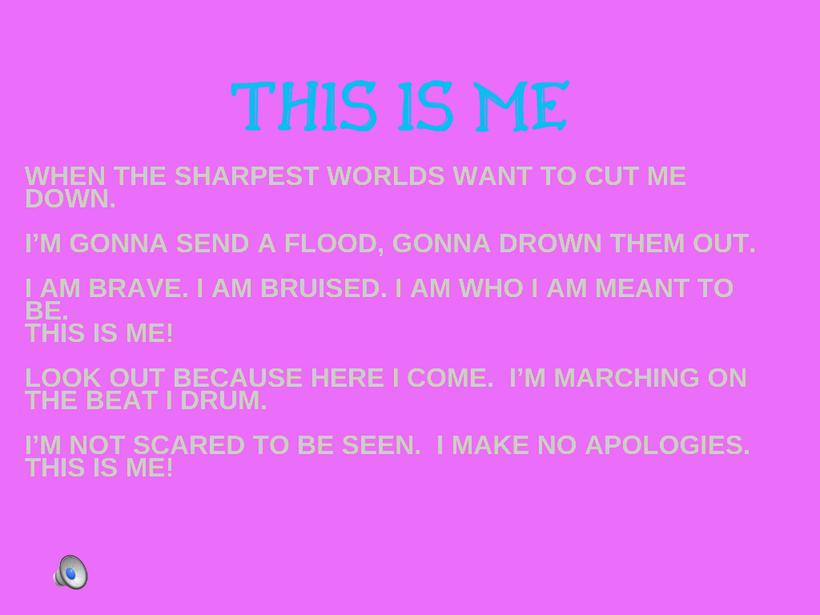

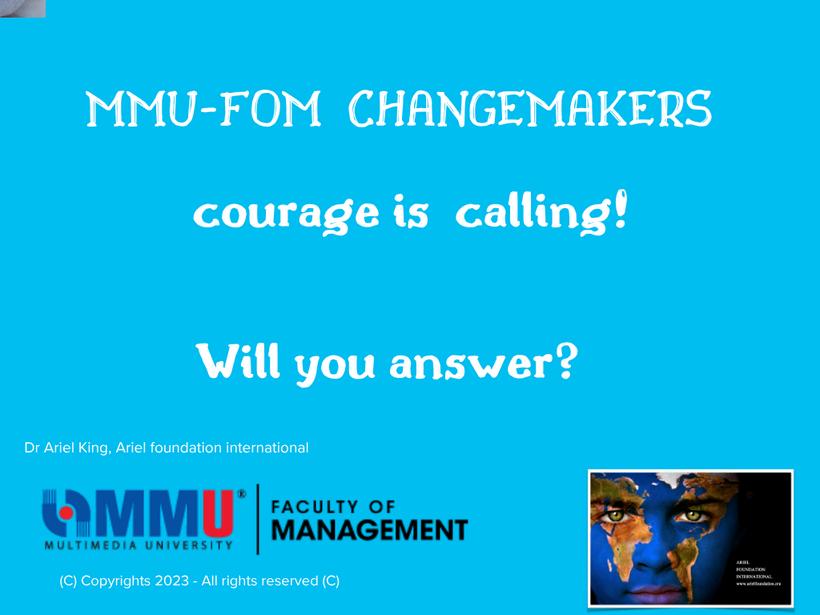











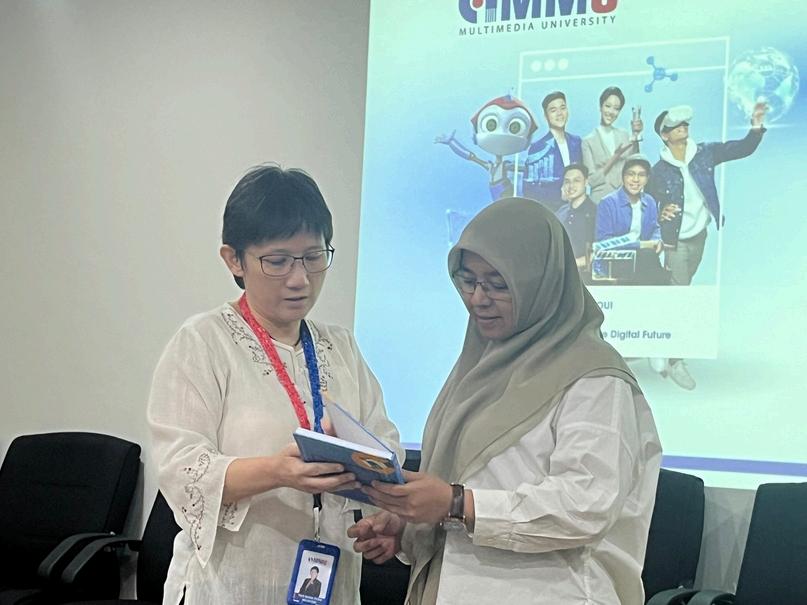










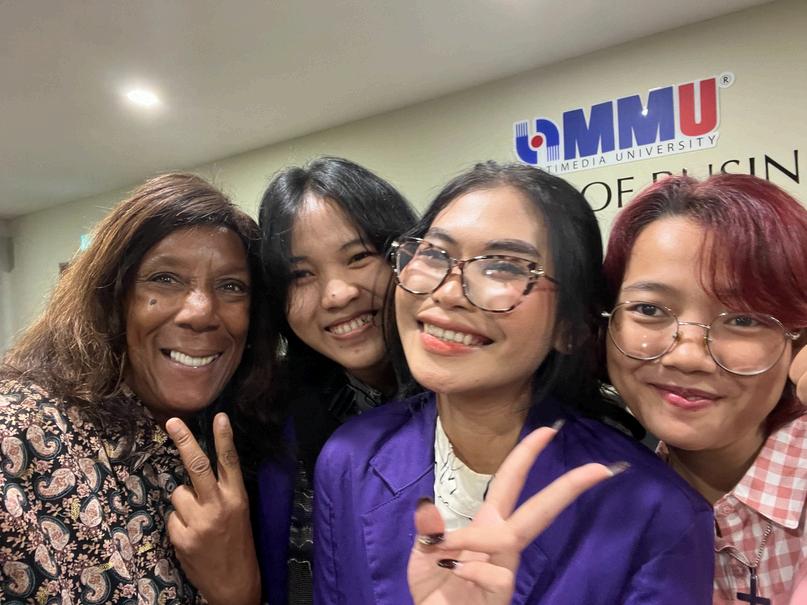


























1.SmAISHAHFAKISHASTABDUL RAfIMAN
2.NURFARISHAELATHIBTMOMP MALED
3.MUHAMMADNASRULHA
4.IMBINSHARIFAHMA
5.ASHRABBINJAFRIZ
6.SARAHJARMINEBINTIAMMAD RIZA
7.NurAnnelieseBintimohdKhalid
8.SurpasanggaryGinalan
9.DarenJeenanathun
10.SuvarnalachumiAlemallatamby
11.CassandraRayeneChanes
12.AmniBatriayiabirtiUnaisGarni
13.Niakhayilabt.KhairilfaiziNoor
14.NatiguA/PGunasekaram
15. kamandzaman
16.SitiAisyahBintiNorArman
17.TyronneChongXiXuan
18.AhnafAlmandeedNarziera
19.SURAJVARDAA/MURALI
20.Nixi’zzISKANDAR
21.ZULGARNAINBINJUSLAN
22.BelyndaWong
23.AndrewLimRanBanTalfor than AhmadNazim Bin
24.NgHasYang
25.NurdistinaPuteri
26.NurdaniaFasinah
27.ANISHAPREETKauR
28.HAZIQIRFAN
29.MuhammadHazioIslandar
30.ShahHasnalHidic
31.SalahAd-dinYusuf
32.ChowsingYang
33.NuraleshaZahrao
34.YASMINEANISA
35.Haslinbt.Johari
36.MuhommadAfitB.MoldFather an
37.ChanmanSeung
38.MulammadNizanZorsuddes
39.RathivaanSathiasedan
40.Shereenkhan
41.YapYeeYann
42.Wannursofiaia
43.IzzDAMIABATRISTA
44.BAVITIRACHANDRASHEKARAN
45.CHIAJELCIT
46.AMARHUZAIRSBIDMANIF
47.TENGRUALEGYABINTI
48.TENEKUAZAROOSYAMSUL
49.AhmadHilmiFirdaus
50.binZainordin
51.MularmadHazim
52. zulgarnain bin Mohammad Kheira
53.ArisyaRaudahbintiAsmi
54.BalinderjitKurKaur
55.CHIAJEEIT
56.TasJunXian
57.ShahHusnulAidiel
58. ST ALSHAN RRISHA BI ABDUC LAHMAN
59.NyHawYang
60.ChowJingYang
61.SITIAISYAHBTNORADMAN
62.BalindegitKaurMrJigitSingh
63.AndrewLimKadBan
64.NativalpGunasekaram
65.SuvainalachumiAleNalletamby
66. BAVITIRA AP CHANDRA SHEKARAN
67.AhmadHilmiFirdaus
68.BinZeinordin
69. IH Nur Narziera Ahmad Narzaray
70.IzMUHAMMADNASRULHA
71.IMBINSHARIF
72. SARAH JASMINE BINT) AMMAD RIDEA
73.GassandraRayeneCharles
74.BelyndaWonn
75.wannursofia
76. Nuralesha Zohraa Binti Mohd Azzurizam
77.SURADVARQAA/LMURALI
78.MuhammadHaziqIrfanbinHari
79. TENGKU ALEGYA BINTI TENGKU AZAKOOSYAMSUL
80.MulammadMazigIslcandar
81.NurdamiaFasihahbintiSuhaimi
82.IZZDAMIABATRISYABTPUTERA
83.AmniBatrisyidbintiVuraisGarni
84.SurasanggaryMPGunalan
85.ANISHAPReeTKAUR
86.EyuXiangNian
87.NurdistinoPuteri
88.ArisyaRaudanbintiArmi
89.NiaKhaylilabt
90.KhairilfaiziNour
91. Nur Farisha faathi Bt Mond Haled

DR.ARIELROSITAKING,MPH,MBA,PHD (UK),DTM&H,PHD(FRANCE)
FounderandPresidentAriel FoundationInternational&Dr.King Solutions
"Empowermentisnotaboutgivingpower,butaboutreleasingthe powertheyalreadyhave."ThisquoteembodiesthespiritofDr.Ariel King's work in fostering empowerment and creating opportunities for individuals and communities to thrive Dr King's dedication to empoweringchildrenandyouth,fosteringtheiractiveinvolvement in international decision-making processes, has garnered widespreadrecognitionandacclaim.
As the Founder and President of Ariel Foundation International (wwwarielfoundationorg ), a non-profit organization founded in 2002, holding special consultative ECOSOC Status with the United Nations(2016)andNGOStatusattheEuropeanParliament(2015). RegisteredintheUSA,France,Switzerland,andGhana.Dr.Kinghas madeasignificantimpactonthelivesofyouthacross30+countries. With a focus on leadership, entrepreneurship, and community service,AFIhasimpactedapproximately150,000youngindividuals Notably, AFI made history by accrediting children and youth as official Delegates to the United Nations Human Rights Council in Geneva. Through her foundation, Dr. King has promoted partnerships, peace, and prosperity through entrepreneurship and education
Dr ArielRositaKingisanaccomplishedindividualwithanextensivebackgroundininternationalhealth, publichealthpolicy,andinternationalmanagement.Withover35yearsof experienceingovernment, diplomacy, business, and NGOs, she has worked and lived in 11 countries and travelled to over 65 countriesacrossAsia,Africa,Americas,MiddleEast,andEurope AsaProfessorinInternationalHealth, Management, Policy, and Environment, she has shared her knowledge and expertise at various universitiesintheUSA,Europe,andAfrica
Dr.King'scontributionsextendbeyondherworkwithArielFoundationinternational.Shewaschosento beontheExpertAIDSPreventionworkingGroupwiththeBillandMelindaGatesFoundation(USA)and theHumanScienceResearchCouncil(SouthAfrica).Additionally,In2000,Dr.KingestablishedAriel Consulting International, Inc, now known as Dr King Solutions ( wwwdrkingsolutionscom ) , a company focused on enhancing Public-Private Partnerships in international health, policy, and management specifically in developing countries. Her commitment to promoting collaboration and sustainable development has led to the successful implementation of strategic planning initiatives, workshops,coaching,andkeynotespeechesaimedatempoweringindividualsandorganizations.
Notably, Dr. King is a strong advocate for professional development. Her offerings include comprehensive training programs such as Strategic Planning for International Business Development, Public-Private Partnerships,EuropeanandAfricanUniversityDegreeswithoutdebt,IvyLeagueTrainingwithoutdebt,and guidanceonstartingnot-for-profitorganizationsandinternationalbusinesses
Dr King'sdedicationtopromotingpositivechangeonaglobalscalehasalsoledhertoengagewithvarious internationalorganizations SheassistsbusinessesinobtainingSpecialECOSOCStatuswiththeUnitedNations, promotesallianceswithintheinternationalNGOarena,andencouragesbusinessengagementswithNGOsand Community-BasedOrganizations.
Beyond her remarkable achievements, Dr. King remains committed to environmental sustainability Throughherlatestventure,DrKingSolutions,sheprovideseco-friendlybags thatcombatplasticpollution.Everypurchasecontributestothefightagainstplasticpollution and supports the Ariel Foundation International's vital work in children and youth developmentthroughresearchandenvironmentalclimateservices.
Dr King'scommitmenttoadvocatingforChildren'sHumanRightsworldwideledhertoestablishtheArianaLeilaniChildren'sFoundationInternationalin2008.Byfoundingthisorganization,sheaimedtoeducateand advocatefortherightsofchildrenglobally,emphasizingtheimportanceoftheirwell-being.
AtestamenttoDr King'simpactishermostrecentwork,thebooktitled'HumanityUnveiled'Thisprofoundand enlighteningjourneyinvitesleadersandseekersbeyondtheordinary,guidingthemtouncovertheessenceof humanityanditstransformativepowerinshapingamorecompassionateworld Throughintimateencounters withluminariessuchasDr.MayaAngelou,Dr.NinaSimone,PresidentNelsonMandela,andDr.ElisabethKublerRoss,Dr.Kingweavesarichfabricofinsightandenlightenment.Theseencountersserveaspoignantlessons, revealingtheprofoundimpacteachhumanconnectioncanhaveonourcollectiveunderstandingofwhatittruly meanstobehuman
'HumanityUnveiled'isnotmerelyabook;itisatransformativejourneythatcallsuponleadersanddreamersto embracetheirhumanityandcontributetotheevolutiontowardsamorecompassionateandconnectedworld. Dr.ArielKing'sprofoundinsightsresonatewithreaders,sparkingarenewedsenseofpurposeandaprofound appreciationforthehumanexperience
Dr King'sinfluenceextendsbeyondherfoundationandbook Shehasservedasarepresentativeforvarious non-governmentalorganizations(NGOs)attheUnitedNationsinGeneva,Vienna,andNewYork.Shehasalso beenanactivememberoforganizationssuchasWomenImpactingPublicPolicy(WIPP),theWomen'sForeign PolicyGroup(WFPG),andvariousInternationalRotaryClubs
Inconclusion,Dr ArielKing'slifetimecommitmenttoempoweringchildrenandyouth,promotinginternational health, advocating for Children's Human Rights, and fostering public-private partnerships has made a remarkableimpactoncommunitiesworldwide.Herleadership,expertise,anddedicationtomakingadifference positionherasaninfluentialwomandeservingofrecognition.Dr.ArielKingisatruechampionandinspiration, embodyingthespiritofempowermentandthepursuitofamorecompassionateworld HerFavoritequoteby Hillel, "If I am not for myself, who will be for me? If I am only for myself, what am I? If not now, then when?" reflects her belief in taking action and bearing personal responsibility. She has embraced the missing piece in this quote, realizing the importance of asking, "If not me, then who?" Through her remarkable journey, she has become a beacon of hope and inspiration, shining light on the power of empowermentandthesignificanceofmakingadifferenceinthelivesofothers

Moses Ekwere, a distinguished ChangeMaker, Environmentalist, and Children & Youth Advocate, leverages over 5 years of profound experienceaddressingmultifaceteddevelopment issues Hailing from Akwa Ibom state, Nigeria, MosesiscurrentlytheExecutivePersonalAideto Dr Ariel King, CEO of Dr King Solutions and Founder/President of Ariel Foundation International(AFI).Inhisroleasthepermanent representative of AFI to the United Nations in Geneva,hedemonstratesacommitmenttoglobal impact Moses holds a Bachelor’s degree in Human Resource Management from the UniversityofCapeCoastinGhana,aligninghis
mission with the United Nations’ SDGs 4, 5, 13, and 17, aiming to reform societies and safeguardtheenvironmentthrougheducationandadvocacy.AstheCountryDirectorofAriel Foundation International Ghana, Moses Ekwere leads a 100-person youth delegation in impactful initiatives. Notably, under his leadership, a significant cleanup operation was conducted at the Korle Lagoon Beach in Jamestown, Greater Accra, aligning with Global Youth Service Day (GYSD) This endeavor brought together volunteers, local groups, and Ecozoil Ltd, demonstrating a strong commitment to ecological stewardship and societal involvement
MosesEkwereisdedicatedtoinstillingvaluesofaccountabilityandecologicalawarenessin young people, fostering a cleaner, healthier environment for all. Passionate about sustainability, he collaborates with the Greenway International Foundation Inc., a UNaccreditedenvironmentalorganization, toraiseawarenessofclimatecalamity'simpacton mental health and promote environmental diversity.Through impactful training programs and initiatives like anti-plastic movements, Moses actively contributes to mitigating environmental concerns, including eliminating over 1.2 million plastic straws in Accra, Ghana.
Drivenbyavisionforcleanenergyandgreenhousegasreduction,Mosesleadsthe“Rootsof Resilience”project,focusingonplanting1millionfruittreesacrossNigeriaandestablishing botanicalgardensinschoolsforeducationalandclimatesensitizationpurposes.Partnering withtheWAAWFoundation,thisinitiativealsoincludesbasiccomputertrainingtoenhance STEMeducationandenvironmentalliteracy
Inhisinternationalstudentleadershiprole,MosesservedastheSecretaryGeneralofNANS Ghanafrom2019to2020,championinggenderequality,peacediplomacy,andcommunity development outreach. As a proud member of the Nigerian Red Cross Society, Moses Ekwere's unwavering dedication and visionary leadership contribute significantly to the globalpursuitofpositivechange

Michael Ufia is a distinguished ChangeMaker, Environmentalist, Economist, and Youth Advocate with seven years of extensive experience addressing multifaceted development issues. He currently serves as the Monitoring & Evaluation Specialist at Ariel Foundation International and Dr King Solutions
Michael holds a degree in Political Science from Madonna University, Anambra State, Nigeria, and is pursuing a Postgraduate Diploma in Economics Development and Planning. His blend of academic knowledge and practical expertise drives his commitment to sustainable impact and professional growth
During his National Youth Service Corps (NYSC) program, Michael served as an Account Officer at Royal Crown Microfinance Bank – Abuja, where he developed essential skills in financial management and accounting. This experience laid a solid foundation for his later work in data analysis and project evaluation
Michael worked with the National Malaria Advocacy Program as a Data Analyst for four years, where he played a crucial role in managing and interpreting data to guide program initiatives. His analytical skills enabled the program to identify key trends, refine intervention strategies, and strengthen malaria prevention efforts Beyond data analysis, Michael actively participated in community outreach and public health campaigns, including a significant contribution to World Malaria Day 2021 His involvement included organizing comprehensive malaria prevention and treatment activities, offering free malaria tests, distributing medication, supporting environmental sanitation, and providing mosquito nets.
Michael’s commitment to the National Malaria Advocacy Program reflects his ability to merge data-driven insights with hands-on community engagement, embodying a holistic approach to public health and development.
As a Monitoring & Evaluation Specialist, Michael made a notable impact during the 2024 Ghana Korle Lagoon Beach-Jamestown Seaside Clean-up, where his leadership in community engagement underscored the importance of collective action in environmental conservation. He also led the graphic design for all event materials, showcasing his multifaceted skills
In his role promoting clean energy and greenhouse gas reduction, Michael contributed significantly to the "Roots of Resilience" project This initiative, aimed at planting one million fruit trees across Nigeria, seeks to foster environmental literacy and climate awareness by establishing botanical gardens in schools In partnership with the WAAW Foundation, the project includes computer training to enhance STEM education, which coincided with the International Day of the Girl Child in 2023 Through this program, Michael educated young adults on the negative impacts of poor environmental practices and the importance of climate action.
Michael’s dedication to personal growth is exemplified by his Certificate of Completion from HRCI Nigeria for the "Growth Dynamics: HR in Business Expansion" course He is considering further education in Human Resources to broaden his skill set.
Beyond his professional commitments, Michael enjoys reading, volunteering, and advocating for sustainable development practices, reflecting his commitment to creating a more sustainable and equitable world

This publication is a project of Ariel Foundation International, created as part of its global mission to empower youth and advance human dignity through education, health, and leadership development. In partnership with Malaysia’s Multimedia University (Cyberjaya and Melaka Campuses), this comprehensive study explores the psychological and social pain experienced by university students, with a focus on self-confidence and academic withdrawal. By addressing the silent struggles behind student disengagement, the Foundation champions evidence-based action across public health, education, and youth development sectors.
This initiative reflects Ariel Foundation International’s ongoing commitment to amplifying youth voices, fostering inclusive well-being, and supporting sustainable solutions that uplift communities and transform futures. The Foundation gratefully acknowledges the support and collaboration of Malaysia Multimedia University, whose openness to youthled inquiry and academic partnership embodies the spirit of innovation and global citizenship.


